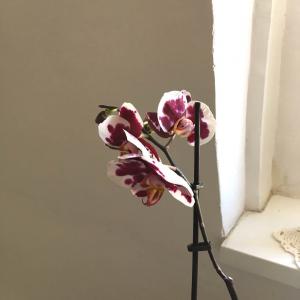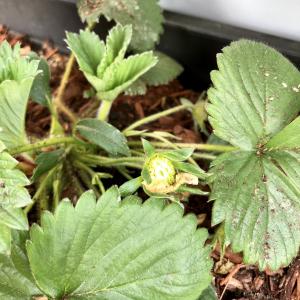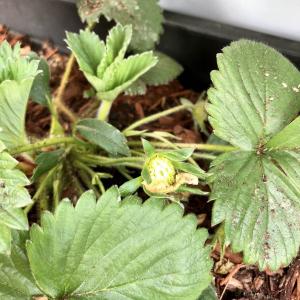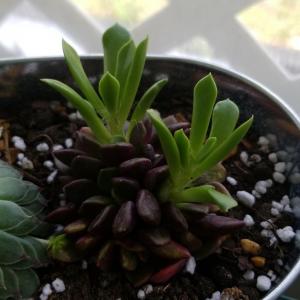文章
Miss Chen
2018年05月15日

A summer squash, the zucchini grows well in most summer vegetable gardens. You only need one zucchini plant to produce fruit, as the plants grow separate male and female flowers on the same plant, which are usually pollinated by bees and other insects. You can also pollinate the flowers by hand if you are growing them in a greenhouse or other area where insect pollination isn't possible. Telling the difference between the male and female blooms ensures you pollinate the zucchini correctly for the maximum amount of fruit at harvest time.

Step 1
Inspect the stems of the flowers. Female flowers have short stems while male flowers have long, thin stems.
Step 2
Look behind the flower for a swollen base. Flowers with the swollen base are female, as this is the ovary that later develops into the zucchini after germination.

Step 3
Find the stamen in the center of suspected male blossoms. Male flowers have a single, long stamen that is covered in pollen, while female blossoms have a stigma with multiple stems inside.

Step 1
Inspect the stems of the flowers. Female flowers have short stems while male flowers have long, thin stems.
Step 2
Look behind the flower for a swollen base. Flowers with the swollen base are female, as this is the ovary that later develops into the zucchini after germination.

Step 3
Find the stamen in the center of suspected male blossoms. Male flowers have a single, long stamen that is covered in pollen, while female blossoms have a stigma with multiple stems inside.
0
0
Finncarter
2018年05月13日

Notocactus Haselbergii:
- This suoer spikey cactus coverd, has bright red blooms during mid to late spring. A single cactus of its sort can produce up to 6-7 flowers a year, this plant is also very easy to cross-pollenate.
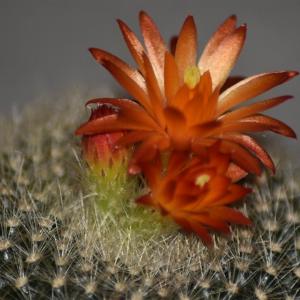
- This suoer spikey cactus coverd, has bright red blooms during mid to late spring. A single cactus of its sort can produce up to 6-7 flowers a year, this plant is also very easy to cross-pollenate.

1
0
Finncarter
2018年05月13日

Lithops Olivecea, know as the living stone has annual (white daisy) likd flowers - for up to 3 weeks. These slow growing succulents produce lovley patterns on the top. they need to be watered every 4-6 weeks. @GFinger #Lithops ##Pattern ##Livingstones #Daisy
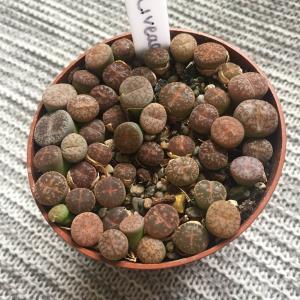

1
0
文章
Miss Chen
2018年05月10日

Description: This perennial wildflower is 3-10" tall, consisting of one or more stems with alternate leaves and compound umbels of flowers. The light green to reddish brown stems are stout, longitudinal ridged, and glabrous; sometimes they are erect, but more often sprawl across the ground. The leaves are up to 5" long and 3" across; they are ternately compound (typically divided into 3 leaflets). Each leaflet is irregularly cleft into about 3 narrow lobes; these lobes are oblong, elliptic-oblong, or narrowly oblanceolate and their margins lack teeth. The blades of the leaves (i.e., their leaflets) are light to medium green and glabrous, while their long petioles are sheathed at the base.
The stems terminate in compound umbels of white flowers. Each compound umbel consists of 1-4 umbellets, while each umbellet has 1-6 flowers. The flowers of each umbellet are closely bunched together because their pedicels are quite short. At the base of each umbellet, there is a small leafy bract. Each flower is about ¼" across, consisting of 5 narrow white petals, 5 stamens, a divided white style, and no sepals. The anthers of the stamens are initially dark red, but they soon turn black. The blooming period occurs from early to mid-spring and lasts about 1 month. Each flower is replaced by a slightly flattened globoid fruit (a schizocarp) that contains a single seed. The root system consists of a corm with fibrous roots. This wildflower reproduces by reseeding itself. Occasionally, it forms loose colonies of plants.
Cultivation: Some dappled sunlight is required during the spring, otherwise shade is tolerated. Moist to mesic conditions and a rich loamy soil with some rotting organic matter are preferred. Most vegetative growth and development occurs during thePlant in Bloom spring.
Range & Habitat: The native Harbinger-of-Spring has a scattered distribution throughout most of Illinois, but it is absent from the NW section of the state (see Distribution Map). It is occasional in some woodlands, but mysteriously absent from many others. Habitats include rich mesic woodlands with deciduous trees, wooded areas at the base of bluffs, rocky bluffs, wooded bottomland of rocky canyons, gentle wooded slopes along rivers, and areas along woodland paths. This wildflower is normally found in high quality deciduous woodlands.

Faunal Associations: The flowers attract primarily small to medium-size bees and miscellaneous flies. Bee visitors include Little Carpenter bees (Ceratina spp.), Mason bees (Osmia spp.), Andrenid bees (Andrena spp.), and Halictid bees (Lasioglossum spp., Halictus spp., etc.). Fly visitors include Calliphorid flies, Anthomyiid flies, Frit flies (Chloropidae), Lance flies (Lonchaeidae), and flower flies (Syrphidae). These insects seek primarily nectar from the flowers.
Photographic Location: A wooded area at the base of a bluff in Kickapoo State Park, Vermilion County, Illinois. This location is not far from an abandoned coal mine.
Comments: This is one of the earliest wildflowers to bloom in our deciduous woodlands. Because of its small flowers and low growth habit, it is rather easy to overlook. Also, when observed from a distance, Harbinger-of-Spring can be confused with other wildflowers with small white flowers. Another common name is 'Pepper-and-Salt Plant,' which refers to the anthers of the flowers (after they have become black) and the bright white petals. This wildflower is fairly distinctive because of its period of early bloom, stout stems, oddly colored anthers, and tight umbellets of flowers with narrow white petals.
The stems terminate in compound umbels of white flowers. Each compound umbel consists of 1-4 umbellets, while each umbellet has 1-6 flowers. The flowers of each umbellet are closely bunched together because their pedicels are quite short. At the base of each umbellet, there is a small leafy bract. Each flower is about ¼" across, consisting of 5 narrow white petals, 5 stamens, a divided white style, and no sepals. The anthers of the stamens are initially dark red, but they soon turn black. The blooming period occurs from early to mid-spring and lasts about 1 month. Each flower is replaced by a slightly flattened globoid fruit (a schizocarp) that contains a single seed. The root system consists of a corm with fibrous roots. This wildflower reproduces by reseeding itself. Occasionally, it forms loose colonies of plants.
Cultivation: Some dappled sunlight is required during the spring, otherwise shade is tolerated. Moist to mesic conditions and a rich loamy soil with some rotting organic matter are preferred. Most vegetative growth and development occurs during thePlant in Bloom spring.
Range & Habitat: The native Harbinger-of-Spring has a scattered distribution throughout most of Illinois, but it is absent from the NW section of the state (see Distribution Map). It is occasional in some woodlands, but mysteriously absent from many others. Habitats include rich mesic woodlands with deciduous trees, wooded areas at the base of bluffs, rocky bluffs, wooded bottomland of rocky canyons, gentle wooded slopes along rivers, and areas along woodland paths. This wildflower is normally found in high quality deciduous woodlands.

Faunal Associations: The flowers attract primarily small to medium-size bees and miscellaneous flies. Bee visitors include Little Carpenter bees (Ceratina spp.), Mason bees (Osmia spp.), Andrenid bees (Andrena spp.), and Halictid bees (Lasioglossum spp., Halictus spp., etc.). Fly visitors include Calliphorid flies, Anthomyiid flies, Frit flies (Chloropidae), Lance flies (Lonchaeidae), and flower flies (Syrphidae). These insects seek primarily nectar from the flowers.
Photographic Location: A wooded area at the base of a bluff in Kickapoo State Park, Vermilion County, Illinois. This location is not far from an abandoned coal mine.
Comments: This is one of the earliest wildflowers to bloom in our deciduous woodlands. Because of its small flowers and low growth habit, it is rather easy to overlook. Also, when observed from a distance, Harbinger-of-Spring can be confused with other wildflowers with small white flowers. Another common name is 'Pepper-and-Salt Plant,' which refers to the anthers of the flowers (after they have become black) and the bright white petals. This wildflower is fairly distinctive because of its period of early bloom, stout stems, oddly colored anthers, and tight umbellets of flowers with narrow white petals.
1
0
Lucky Coyote
2018年05月09日

there are these peculiar flowers that started growing in my area this spring :3 the strange this is that they look strikingly similar to young corn unt they bloom
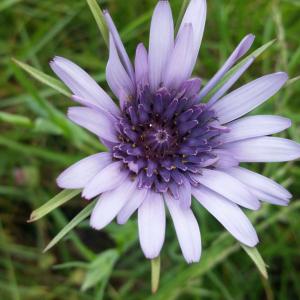

3
0
文章
Miss Chen
2018年05月06日

Description: This herbaceous perennial plant is 3-8" tall and unbranched. It consists of a rather thick spike of flowers, while the leaves are reduced to scales. During the late spring this spike is cream-colored and hairless. Underneath each flower, there is an ovate scale up to ½" long that quickly turns brown. The flowers bloom during the late spring or early summer for about 3 weeks. They are densely crowded all around the spike, and begin to bloom from the bottom to the top. Each flower is about ½" long, consisting of a tubular corolla and a tubular calyx. Both the corolla and calyx are cream-colored, although the teeth of the calyx soon turn brown and wither away. The rest of the calyx wraps around the base of the corolla. The corollas of young flowers are initially semi-erect, but they spread outward from the spike with age. Each corolla has a convex upper lip that functions as a hood, while the poorly defined lower lip is smaller in size. Within the corolla, there are 4 stamens near the interior of the upper lip, and a single stout style that develops along the lower lip. Both the style and filaments of the stamens are white, while the anthers are grey. When the flowers are blooming, some of the stamens and styles may be exerted from their corolla tubes. There is no noticeable floral scent. Each flower is replaced by a seed capsule containing many small seeds; this seed capsule is longer than it is wide.
As the summer progresses, the flowering spike begins to wither and becomes brown. It can persist through the winter, by which time it has become shriveled and black. The root system is parasitic on the roots of Quercus spp. (Oak Trees); the suckers of the parasitic roots cause the formation of large rounded knobs on the roots of the host tree. Because Cancer Root doesn't produce chlorophyll, it is dependent on the host tree for its nourishment. Small clusters of flowering spikes often develop from the same root system. This plant spreads to new locations by reseeding itself.
Cultivation: This parasitic plant is indifferent to light levels. It requires the presence of an Oak tree or its saplings at a well-drained site where the soil is not too compacted.
Range & Habitat: The native Cancer Root is an uncommon plant that has been observed in central and NE Illinois in several counties (see Distribution Map). Habitats include upland woodlands, bluffs, wooded slopes and ravines, and savannas. In all of these habitats, Quercus spp. (Oaks) are invariably present. The flowering spikes of Cancer Root often develop in areas where the leaf litter is scant. The greatest threat to local populations is the invasion of Acer saccharum (Sugar Maple) in Oak woodlands as a result of fire suppression.

Faunal Associations: The pollinators of the flowers have not been described for this species to my knowledge. A related species, Orobanche uniflora (One-Flowered Broomrape), is pollinated by bumblebees. Black Bears forage on the flowering spikes of Cancer Root after they come out of hibernation. There is also some evidence that deer browse on the flowering spikes occasionally. Because it is possible that the seeds can survive passage through the gastrointestinal tract, such animals may help to disperse the seeds to new locations.
Photographic Location: A bluff in Vermilion County, Illinois.
Comments: This parasitic plant looks like a mutant pine cone or something from a horror movie. Its closest relatives are Orobanche spp. (Broomrapes), which are also parasitic and uncommon. The species Orobanche ludoviciana (Prairie Broomrape) has a similar appearance with thick white spikes of flowers, but the corollas of its flowers are usually tinted lavender or pale purple and they are longer (about ¾" in length). Another common name of Conopholis americana is Squawroot.
As the summer progresses, the flowering spike begins to wither and becomes brown. It can persist through the winter, by which time it has become shriveled and black. The root system is parasitic on the roots of Quercus spp. (Oak Trees); the suckers of the parasitic roots cause the formation of large rounded knobs on the roots of the host tree. Because Cancer Root doesn't produce chlorophyll, it is dependent on the host tree for its nourishment. Small clusters of flowering spikes often develop from the same root system. This plant spreads to new locations by reseeding itself.
Cultivation: This parasitic plant is indifferent to light levels. It requires the presence of an Oak tree or its saplings at a well-drained site where the soil is not too compacted.
Range & Habitat: The native Cancer Root is an uncommon plant that has been observed in central and NE Illinois in several counties (see Distribution Map). Habitats include upland woodlands, bluffs, wooded slopes and ravines, and savannas. In all of these habitats, Quercus spp. (Oaks) are invariably present. The flowering spikes of Cancer Root often develop in areas where the leaf litter is scant. The greatest threat to local populations is the invasion of Acer saccharum (Sugar Maple) in Oak woodlands as a result of fire suppression.

Faunal Associations: The pollinators of the flowers have not been described for this species to my knowledge. A related species, Orobanche uniflora (One-Flowered Broomrape), is pollinated by bumblebees. Black Bears forage on the flowering spikes of Cancer Root after they come out of hibernation. There is also some evidence that deer browse on the flowering spikes occasionally. Because it is possible that the seeds can survive passage through the gastrointestinal tract, such animals may help to disperse the seeds to new locations.
Photographic Location: A bluff in Vermilion County, Illinois.
Comments: This parasitic plant looks like a mutant pine cone or something from a horror movie. Its closest relatives are Orobanche spp. (Broomrapes), which are also parasitic and uncommon. The species Orobanche ludoviciana (Prairie Broomrape) has a similar appearance with thick white spikes of flowers, but the corollas of its flowers are usually tinted lavender or pale purple and they are longer (about ¾" in length). Another common name of Conopholis americana is Squawroot.
0
0
文章
Miss Chen
2018年04月25日

Description: This is a herbaceous perennial plant with the leaves and flowers emerging directly from the rhizomes, and forming a basal rosette. A typical mature plant may be 6" across and 4" high, with the flowers slightly higher than the leaves. The leaves are individually up to 3" long and 3" across (excluding the long petioles), and vary in color from yellowish green to dark green, depending on growing conditions. They are oval-ovate to orbicular-cordate in shape, and crenate or serrate along the margins. Different populations of plants can vary in the hairiness of their leaves – from nearly glabrous to conspicuously hairy or pubescent. The flowers are about ¾" across, and consist of 5 rounded petals. There are 2 upper petals, 2 lateral petals with white hairs (or beards) near the throat of the flower, and a lower petal that functions as a landing pad for visiting insects. The flowers of this form of Viola sororia are medium to dark violet. The inner throat of each flower is more or less white, from which slightly darker veins radiate outward along the petals (particularly the lower one). There is no noticeable floral scent. The blooming period occurs from mid- to late spring, and lasts about 1-1½ months. During the summer, cleistogamous flowers without petals produce seeds, which are flung outward by mechanical ejection from the three-parted seed capsules. The root system consists of thick, horizontally branched rhizomes; there is a tendency to form vegetative colonies.
Cultivation: The preference is partial sun or light shade, and moist to average conditions, although full sun is tolerated if there is sufficient moisture. The soil should be a rich silty loam or clay loam with above average amounts of organic matter. The leaves have a tendency to turn yellowish green when exposed to full sun under dry conditions – this reaction is normal, and is not necessarily a sign of poor health. This plant is very easy to grow, and it will spread under favorable conditions. This wildflower will adapt to lawns, especially if they are not mowed too often during the spring or cut too low.
Habitat & Range: The native Common Blue Violet occurs in every county in Illinois and it is very common (see Distribution Map). Natural habitats include moist to mesic black soil prairies, open woodlands, woodland edges, savannas, and wooded slopes along rivers or lakes. In developed areas, it can be found in lawns, city parks, moist waste areas, and along hedges or buildings. Sometimes the Common Blue Violet is grown in flower gardens.

Faunal Associations: The flowers are not often visited by insects (hence the need for cleistogamous flowers), but sometimes they attract bees (e.g., Mason, Halictid), skippers, Syrphid flies, and other insects. The Syrphid flies, however, feed only on stray pollen and are non-pollinating. The caterpillars of many Fritillary butterflies feed on the foliage, including Speyeria diane (Diana), Euptoieta claudia (Variegated Fritillary), Speyeria aphrodite (Aphrodite Fritillary), Boloria bellona (Meadow Fritillary), and Boloria selene myrina (Silver-Border Fritillary). The seeds have soft appendages that attract ants, which are in part distributed by them. Various upland gamebirds and small mammals occasionally eat the seeds, including the Wild Turkey, Bobwhite, Mourning Dove, and White-Footed Mouse. Wild Turkeys also eat the leaves and fleshy roots of Viola spp. (Violets). Although it is not a preferred food source, mammalian herbivores occasionally eat the foliage of violets, including the White-Tailed Deer, Cottontail Rabbit, and livestock.
Photographic Location: The photographs were taken at the webmaster's wildflower garden in Urbana, Illinois, Crystal Lake Park of the same city, and at the edge of an agricultural field outside of the same city in Champaign County, Illinois.

Comments: The flowers and young leaves of violets are edible, and can be added to salads in small amounts. The taste is bland. This is the most common Viola sp. (Violet) in Illinois. There are several forms of Viola sororia with differently colored flowers; these often grow in close proximity to each other in a given area. The typical form that is described here, f. sororia, has medium to dark violet flowers and rather well-rounded leaves. Some authorities (e.g., Mohlenbrock) consider these different color forms to be separate species, but this does not seem appropriate to me. Some authorities also consider pubescent and non-pubescent specimens of Common Blue Violet to be separate species, but they tend to intergrade in the field, possibly in response to levels of sunlight in a given habitat. However, if this taxonomic distinction is accepted, then non-pubescent specimens can be referred to as Viola pratincola (Common Blue Violet), while pubescent specimens can be referred to as Viola sororia (Woolly Blue Violet). Because the plants in the above photographs are non-pubescent, they would be considered specimens of Viola pratincola according to this taxonomy.
Cultivation: The preference is partial sun or light shade, and moist to average conditions, although full sun is tolerated if there is sufficient moisture. The soil should be a rich silty loam or clay loam with above average amounts of organic matter. The leaves have a tendency to turn yellowish green when exposed to full sun under dry conditions – this reaction is normal, and is not necessarily a sign of poor health. This plant is very easy to grow, and it will spread under favorable conditions. This wildflower will adapt to lawns, especially if they are not mowed too often during the spring or cut too low.
Habitat & Range: The native Common Blue Violet occurs in every county in Illinois and it is very common (see Distribution Map). Natural habitats include moist to mesic black soil prairies, open woodlands, woodland edges, savannas, and wooded slopes along rivers or lakes. In developed areas, it can be found in lawns, city parks, moist waste areas, and along hedges or buildings. Sometimes the Common Blue Violet is grown in flower gardens.

Faunal Associations: The flowers are not often visited by insects (hence the need for cleistogamous flowers), but sometimes they attract bees (e.g., Mason, Halictid), skippers, Syrphid flies, and other insects. The Syrphid flies, however, feed only on stray pollen and are non-pollinating. The caterpillars of many Fritillary butterflies feed on the foliage, including Speyeria diane (Diana), Euptoieta claudia (Variegated Fritillary), Speyeria aphrodite (Aphrodite Fritillary), Boloria bellona (Meadow Fritillary), and Boloria selene myrina (Silver-Border Fritillary). The seeds have soft appendages that attract ants, which are in part distributed by them. Various upland gamebirds and small mammals occasionally eat the seeds, including the Wild Turkey, Bobwhite, Mourning Dove, and White-Footed Mouse. Wild Turkeys also eat the leaves and fleshy roots of Viola spp. (Violets). Although it is not a preferred food source, mammalian herbivores occasionally eat the foliage of violets, including the White-Tailed Deer, Cottontail Rabbit, and livestock.
Photographic Location: The photographs were taken at the webmaster's wildflower garden in Urbana, Illinois, Crystal Lake Park of the same city, and at the edge of an agricultural field outside of the same city in Champaign County, Illinois.

Comments: The flowers and young leaves of violets are edible, and can be added to salads in small amounts. The taste is bland. This is the most common Viola sp. (Violet) in Illinois. There are several forms of Viola sororia with differently colored flowers; these often grow in close proximity to each other in a given area. The typical form that is described here, f. sororia, has medium to dark violet flowers and rather well-rounded leaves. Some authorities (e.g., Mohlenbrock) consider these different color forms to be separate species, but this does not seem appropriate to me. Some authorities also consider pubescent and non-pubescent specimens of Common Blue Violet to be separate species, but they tend to intergrade in the field, possibly in response to levels of sunlight in a given habitat. However, if this taxonomic distinction is accepted, then non-pubescent specimens can be referred to as Viola pratincola (Common Blue Violet), while pubescent specimens can be referred to as Viola sororia (Woolly Blue Violet). Because the plants in the above photographs are non-pubescent, they would be considered specimens of Viola pratincola according to this taxonomy.
0
0
文章
Miss Chen
2018年04月25日

Description: This is a herbaceous perennial plant with the leaves and flowers emerging directly from the rhizomes, and forming a basal rosette. A typical mature plant may be 6" across and 4" high, with the flowers slightly higher than the leaves. The leaves are individually up to 3" long and 3" across (excluding the long petioles), and vary in color from medium to dark green, depending on growing conditions. They are oval-ovate to orbicular-cordate, and crenate or serrate along the margins. The foliage is glabrous to slightly pubescent. The flowers are about ¾" across, and consist of 5 rounded petals; there are 2 upper petals, 2 lateral petals with white hairs (or beards) near the throat of the flower, and a lower petal that functions as a landing pad for visiting insects. Behind the petals, there are 5 sepals that are green and lanceolate. The petals of this form of Viola sororia are a mottled combination of blue-violet with white; from a distance, they appear pale to medium blue-violet. From the throat of the flower, there are dark blue-violet lines radiating outward (particularly on the lower petal). There is no noticeable floral scent. The blooming period occurs from mid- to late spring and lasts about 1-1½ months. During the summer, cleistogamous flowers without petals produce seeds, which are flung outward by mechanical ejection from the three-parted seed capsules. The root system consists of thick, horizontally branched rhizomes; there is a tendency to form vegetative colonies.
Cultivation: The preference is partial sun or light shade, and moist to mesic conditions, although full sun is tolerated if there is sufficient moisture. The soil should be a rich silty loam or clay loam with above average amounts of organic matter. This plant is easy to grow, and it will spread under favorable conditions.
Habitat & Range: The Confederate Violet is occasional to locally common in Illinois; a Distribution Map is unavailable because the Confederate Violet is (or was) considered a mere color form of Viola sororia. Natural habitats include meadows, open woodlands, woodland borders, savannas, and wooded slopes along rivers or lakes. In more developed areas, it is sometimes found in city parks, lawns, and along hedges or buildings.

Faunal Associations: The flowers have few visitors (hence the need for cleistogamous flowers), but sometimes they attract bees and other insects. The species Andrena viola (Violet Andrenid Bee) is an oligolectic visitor of Viola spp. (Violets). The caterpillars of many Fritillary butterflies (Speyeria spp., Boloria spp., & Euptoieta claudia) feed on the foliage of Violets. Various upland gamebirds and small mammals occasionally eat the seeds, including the Wild Turkey, Bobwhite, Mourning Dove, and White-Footed Mouse. Wild Turkeys also eat the leaves and fleshy roots of violets. Although it is not a preferred food source, mammalian herbivores occasionally eat the foliage.
Photographic Location: The photographs was taken at Crystal Lake Park and Judge Webber Park in Urbana, Illinois.

Comments: The Confederate Violet is the mottled form, f. priceana, of Viola sororia. The common name of this violet refers to the resemblance of the color of its flowers to the color of Confederate uniforms during the Civil War (pale greyish blue). The typical form of this species, Viola sororia sororia (Common Blue Violet), which is more common, has flowers with a more homogenous shade of medium to dark violet. Some authorities (e.g., Mohlenbrock) classify the Confederate Violet as a distinct species, Viola priceana; in this taxonomic reclassification, it appears that no distinction has been made between the Confederate Violet and Viola sororia albiflora (White Wood Violet). I disagree with this taxonomic revision as the Confederate Violet appears to freely hybridize with both the Common Blue Violet and White Wood Violet, and they often occur together in the same habitats. This viewpoint is consistent with the taxonomic classification of the American Violet Society.
Cultivation: The preference is partial sun or light shade, and moist to mesic conditions, although full sun is tolerated if there is sufficient moisture. The soil should be a rich silty loam or clay loam with above average amounts of organic matter. This plant is easy to grow, and it will spread under favorable conditions.
Habitat & Range: The Confederate Violet is occasional to locally common in Illinois; a Distribution Map is unavailable because the Confederate Violet is (or was) considered a mere color form of Viola sororia. Natural habitats include meadows, open woodlands, woodland borders, savannas, and wooded slopes along rivers or lakes. In more developed areas, it is sometimes found in city parks, lawns, and along hedges or buildings.

Faunal Associations: The flowers have few visitors (hence the need for cleistogamous flowers), but sometimes they attract bees and other insects. The species Andrena viola (Violet Andrenid Bee) is an oligolectic visitor of Viola spp. (Violets). The caterpillars of many Fritillary butterflies (Speyeria spp., Boloria spp., & Euptoieta claudia) feed on the foliage of Violets. Various upland gamebirds and small mammals occasionally eat the seeds, including the Wild Turkey, Bobwhite, Mourning Dove, and White-Footed Mouse. Wild Turkeys also eat the leaves and fleshy roots of violets. Although it is not a preferred food source, mammalian herbivores occasionally eat the foliage.
Photographic Location: The photographs was taken at Crystal Lake Park and Judge Webber Park in Urbana, Illinois.

Comments: The Confederate Violet is the mottled form, f. priceana, of Viola sororia. The common name of this violet refers to the resemblance of the color of its flowers to the color of Confederate uniforms during the Civil War (pale greyish blue). The typical form of this species, Viola sororia sororia (Common Blue Violet), which is more common, has flowers with a more homogenous shade of medium to dark violet. Some authorities (e.g., Mohlenbrock) classify the Confederate Violet as a distinct species, Viola priceana; in this taxonomic reclassification, it appears that no distinction has been made between the Confederate Violet and Viola sororia albiflora (White Wood Violet). I disagree with this taxonomic revision as the Confederate Violet appears to freely hybridize with both the Common Blue Violet and White Wood Violet, and they often occur together in the same habitats. This viewpoint is consistent with the taxonomic classification of the American Violet Society.
0
0
文章
Miss Chen
2018年04月25日

Description: This is a herbaceous perennial plant with the leaves and flowers emerging directly from the rhizomes, and forming a basal rosette. A typical mature plant may be 6" across and 4" high, with the flowers slightly higher than the leaves. The leaves are individually up to 3" long and 3" across (excluding the long petioles), and vary in color from pale green to dark green, depending on growing conditions. They are oval-ovate to orbicular-cordate, and crenate or serrate along the margins. The foliage is glabrous to slightly pubescent. The flowers are about ¾" across, and consist of 5 rounded petals. There are 2 upper petals, 2 lateral petals with white hairs (or beards) near the throat of the flower, and a lower petal that functions as aClose-up of Flower landing pad for visiting insects. The flowers of this form of Viola sororia are white to mostly white, except for violet lines radiating from the throat of the flower (particularly the lower petal). There is no noticeable floral scent. The blooming period occurs from mid- to late spring and lasts about 1-1½ months. During the summer, cleistogamous flowers without petals produce seeds, which are flung outward by mechanical ejection from the three-parted seed capsules. The root system consists of thick, horizontally branched rhizomes; there is a tendency to form vegetative colonies.
Cultivation: The preference is partial sun or light shade, and moist to mesic conditions, although full sun is tolerated if there is sufficient moisture. The soil should be a rich silty loam or clay loam with above average amounts of organic matter. This plant is easy to grow, and it will spread under favorable conditions.
Habitat & Range: The native White Wood Violet is occasional to locally common in Illinois; because it is (or was) considered a mere color form of Viola sororia, a Distribution Map is currently unavailable. Natural habitats include open woodlands, woodland borders, savannas, and wooded slopes along rivers or lakes. In more developed areas, it is sometimes found in city parks, lawns, and along hedges or buildings. It is often found in close proximity to Viola sororia sororia (Common Blue Violet).
Faunal Associations: The flowers have few visitors (hence the need for cleistogamous flowers), but sometimes they attract bees and other insects. The species Andrena viola (Violet Andrenid Bee) is an oligolectic visitor of Viola spp. (Violets). The caterpillars of many Fritillary butterflies feed on the foliage of violets, including Speyeria diane (Diana), Euptoieta claudia (Variegated Fritillary), Speyeria aphrodite (Aphrodite Fritillary), Boloria bellona (Meadow Fritillary), and Boloria selene myrina (Silver-Border Fritillary). Some seeds have soft appendages that attract ants, which help to distribute them. Various upland gamebirds and small mammals occasionally eat the seeds, including the Wild Turkey, Bobwhite, Mourning Dove, and White-Footed Mouse. Wild Turkeys also eat the leaves and fleshy roots of violets. Although it is not a preferred food source, mammalian herbivores occasionally eat the foliage, including the White-Tailed Deer, Cottontail Rabbit, and livestock.

Photographic Location: The photographs were taken of plants growing along the edge of a yard in Urbana, Illinois.
Comments: The White Wood Violet is the white form, f. albiflora, of Viola sororia. The typical form of this species, Viola sororia sororia (Common Blue Violet), which is more common, has medium to dark violet flowers. Generally, the White Wood Violet doesn't appear to spread as aggressively as the typical form of this species; it is equally attractive and its light-colored flowers are more conspicuous in shady areas. Some authorities (e.g., Mohlenbrock) combine the White Wood Violet with Viola sororia priceana (Confederate Violet) and regard the two of them together as a distinct species, Viola priceana. However, I disagree with this taxonomic revision and prefer to regard them as distinct color forms of Viola sororia at the present time. This corresponds to the taxonomic classification of the American Violet Society.
Cultivation: The preference is partial sun or light shade, and moist to mesic conditions, although full sun is tolerated if there is sufficient moisture. The soil should be a rich silty loam or clay loam with above average amounts of organic matter. This plant is easy to grow, and it will spread under favorable conditions.
Habitat & Range: The native White Wood Violet is occasional to locally common in Illinois; because it is (or was) considered a mere color form of Viola sororia, a Distribution Map is currently unavailable. Natural habitats include open woodlands, woodland borders, savannas, and wooded slopes along rivers or lakes. In more developed areas, it is sometimes found in city parks, lawns, and along hedges or buildings. It is often found in close proximity to Viola sororia sororia (Common Blue Violet).
Faunal Associations: The flowers have few visitors (hence the need for cleistogamous flowers), but sometimes they attract bees and other insects. The species Andrena viola (Violet Andrenid Bee) is an oligolectic visitor of Viola spp. (Violets). The caterpillars of many Fritillary butterflies feed on the foliage of violets, including Speyeria diane (Diana), Euptoieta claudia (Variegated Fritillary), Speyeria aphrodite (Aphrodite Fritillary), Boloria bellona (Meadow Fritillary), and Boloria selene myrina (Silver-Border Fritillary). Some seeds have soft appendages that attract ants, which help to distribute them. Various upland gamebirds and small mammals occasionally eat the seeds, including the Wild Turkey, Bobwhite, Mourning Dove, and White-Footed Mouse. Wild Turkeys also eat the leaves and fleshy roots of violets. Although it is not a preferred food source, mammalian herbivores occasionally eat the foliage, including the White-Tailed Deer, Cottontail Rabbit, and livestock.

Photographic Location: The photographs were taken of plants growing along the edge of a yard in Urbana, Illinois.
Comments: The White Wood Violet is the white form, f. albiflora, of Viola sororia. The typical form of this species, Viola sororia sororia (Common Blue Violet), which is more common, has medium to dark violet flowers. Generally, the White Wood Violet doesn't appear to spread as aggressively as the typical form of this species; it is equally attractive and its light-colored flowers are more conspicuous in shady areas. Some authorities (e.g., Mohlenbrock) combine the White Wood Violet with Viola sororia priceana (Confederate Violet) and regard the two of them together as a distinct species, Viola priceana. However, I disagree with this taxonomic revision and prefer to regard them as distinct color forms of Viola sororia at the present time. This corresponds to the taxonomic classification of the American Violet Society.
1
0





